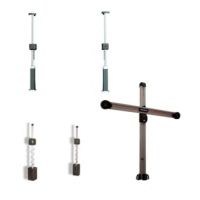5
AC/DC POWER DISTRIBUTION
When inserting PCB’s:
• Place boards on a grounded static mat after removal.
• Remove the new PCB from the original package onto a grounded static mat. Save packaging to use
when returning defective boards.
• Remove power from the machine (un-plug from wall) before installing the PCB.
• Avoid handling components needlessly.
• Do not set PCBs on insulating surfaces such as paper, glass, rubber, or plastic.
• Static is generated by friction. The following actions promote static generation:
• Wearing silk or nylon clothing.
• Walking on carpets.
• Walking with rubber soled shoes.
Static generation is increased when certain environmental conditions exist. Conditions of low humidity com-
bined with wearing silks or nylons, walking on carpets, or walking with rubber soled shoes may create large
electrostatic charges on your person, capable of blowing a hole in the substrate of an IC.
SERVICE GUIDELINES
1. BEFORE REPLACING circuit boards, verify that the main power supply operates within specications.
2. VERIFY that board connectors are fully seated.
3. NEVER remove boards or disconnect a connector with the power on!
4. MAKE SURE that you completely understand what the aligner does. (If it works, you can’t x it!) Refer
to the Aligner Operator’s Manual, application notes, and ow diagrams.
5. BE CAREFUL when handling circuit boards! Wear an anti-static wrist strap.
6. WHEN TRANSPORTING circuit boards, use anti-static bags.
NOTE: RELATIVE HUMIDITY HAS A DIRECT EFFECT ON STATIC CHARGE BUILDUP. AS HUMIDITY
DECREASES, STATIC BUILDUP USUALLY INCREASES.
LOCKOUT AND/OR TAGOUT SYSTEM PROCEDURE
1. Notify all affected employees that a lockout or tagout system is going to be utilized and the reason
thereof. The authorized employee shall know the type and magnitude of energy that the machine or
equipment utilized and shall understand the hazards thereof.
2. If the machine or equipment is operating, shut it down by the normal stopping procedure (depress the
stop button, open toggle switch, etc.)
3. Operate the switch, valve, or other energy isolating device(s) so that the equipment is isolated from its
energy source(s). Stored energy (such as that in springs, elevated machine members, rotating ywheels,
hydraulic systems, and air gas, steam or water pressure, etc.) must be dissipated or restrained by meth-
ods such as repositioning, blocking, bleeding down, etc.
4. Lockout and/or tagout the energy isolating devices with individual lock(s) or tag(s).
5. After ensuring that no personnel are exposed, and as a check on having disconnected the energy sourc-
es, operate the push button or other normal operating controls to make certain the equipment will not op-
erate. CAUTION: RETURN OPERATING CONTROL(S) TO “NEUTRAL” OR “OFF” POSITION AFTER
THE TEST [DE-ENERGIZED STATE].
6. The equipment is now locked out or tagged out.

